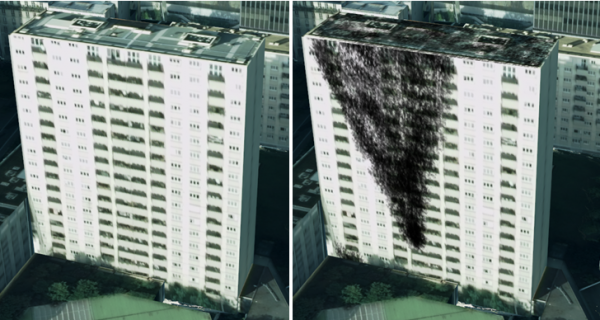Create temporal 3D city models
We have developed a temporal Application Domain Extension (ADE) for the CityGML standard supported by 3D-Use. Its objective is to allow a grouping of city models present in different CityGML files and the representation of the territory they describe over multiple dates into a single output file. We achieve this by adding a temporal functionality to the CityGML standard that stores different states for each object corresponding to dates. For example, the construction date corresponds to the first state of the building and the destruction date to its last state. With this temporal information and 3D-USE (or any other tool supporting it), we can view the city over time by opening a single file using this feature. Through a timeline defining the use date, 3D-Use displays only objects whose existence is available at this date. The visualization of the evolution of the city is then intuitive.

Two different models of the same buildings have been stored in a single CityGML file. They correspond to two dates between when the building was fully constructed and partially burnt. The user can navigate these two models with an adapted tool supporting the temporal ADE, like 3D-Use
Online demonstrations
- Versioning the city : three timestamps at city level (3DTiles based)
Videos
Publications
This CityGML feature has been presented at the international conference “Eurographics Workshop on Urban Data Modelling and Visualisation 2014”.